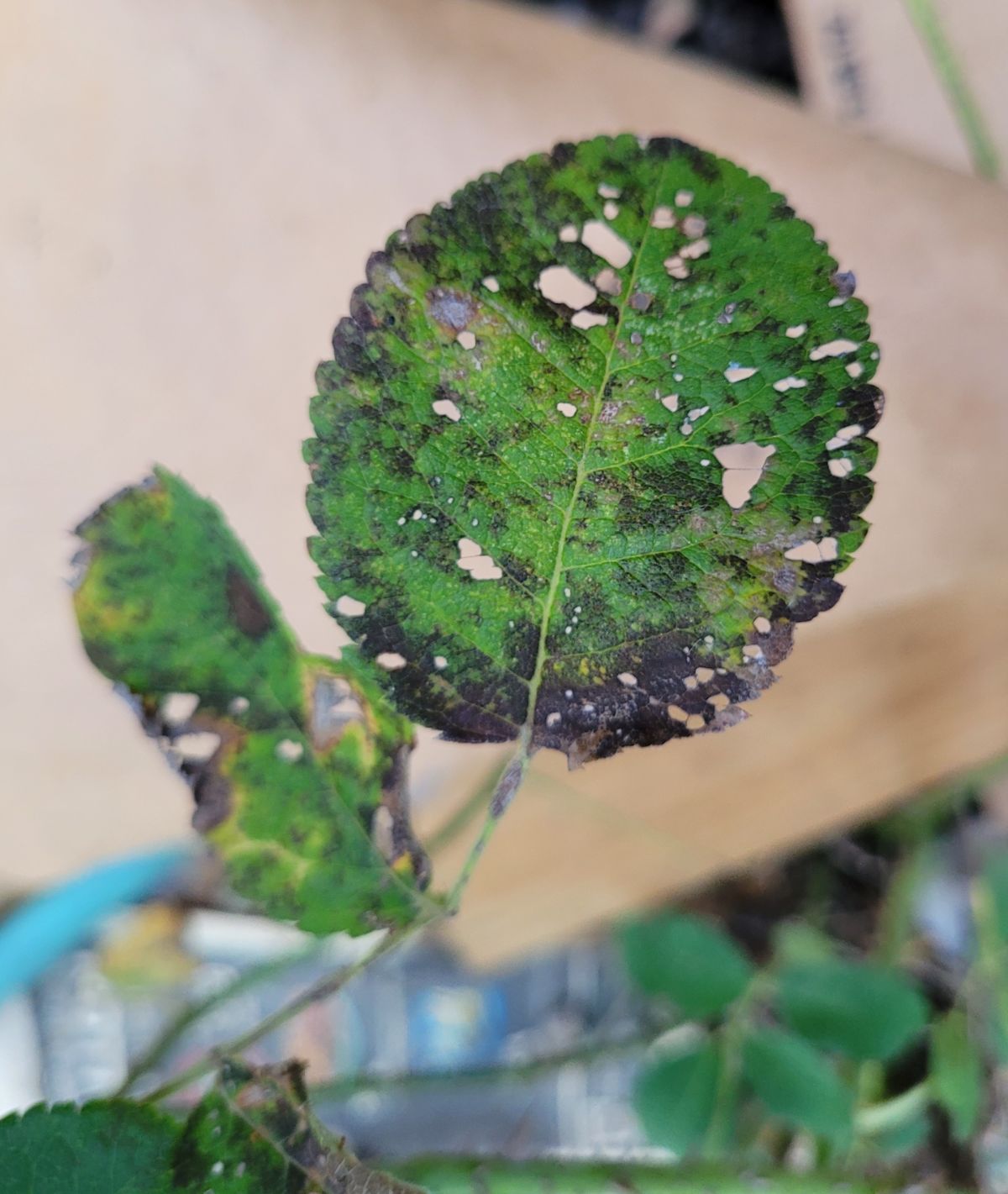
Jump to:
- Overview of Black Spot Disease
- Symptoms of Black Spot
- Life Cycle of Black Spot
- Why is Black Spot So Hard to Eradicate?
- How to Prevent and Control Black Spot on Roses
- More Ways to Fight Black Spot on Your Roses
- Chemical Controls for Black Spot
- Preventative fungicides
- Curative fungicides
- Dormant fungicides
- Apply Fungicides to Your Roses Before They Catch Black Spot
Overview of Black Spot Disease
Black spot is caused by a fungus called Diplocarpon rosae, and it’s one of the most common diseases to affect roses. In other areas of the world, other fungi causes black spot on roses, including Alternaria spp. It’s characterized by black spots and patches on the affected leaves. In some roses (often hybrid teas), it attacks the leaves until they all fall off, leaving nothing but the rose’s stem and some blossoms.
Black spot doesn’t kill roses immediately, but the rose is greatly weakened from leaf loss, making it more susceptible to other diseases as well as climate stresses such as excessive heat and drought in summer or temperature plunges in winter.
The disease also is made worse when the climate is working against you. The black spot fungus loves warm, cloudy, humid weather and can be a real nuisance after a chain of rainy days.
It’s most certainly a frustrating disease! But there are ways to slow its spread. Read on.
Symptoms of Black Spot
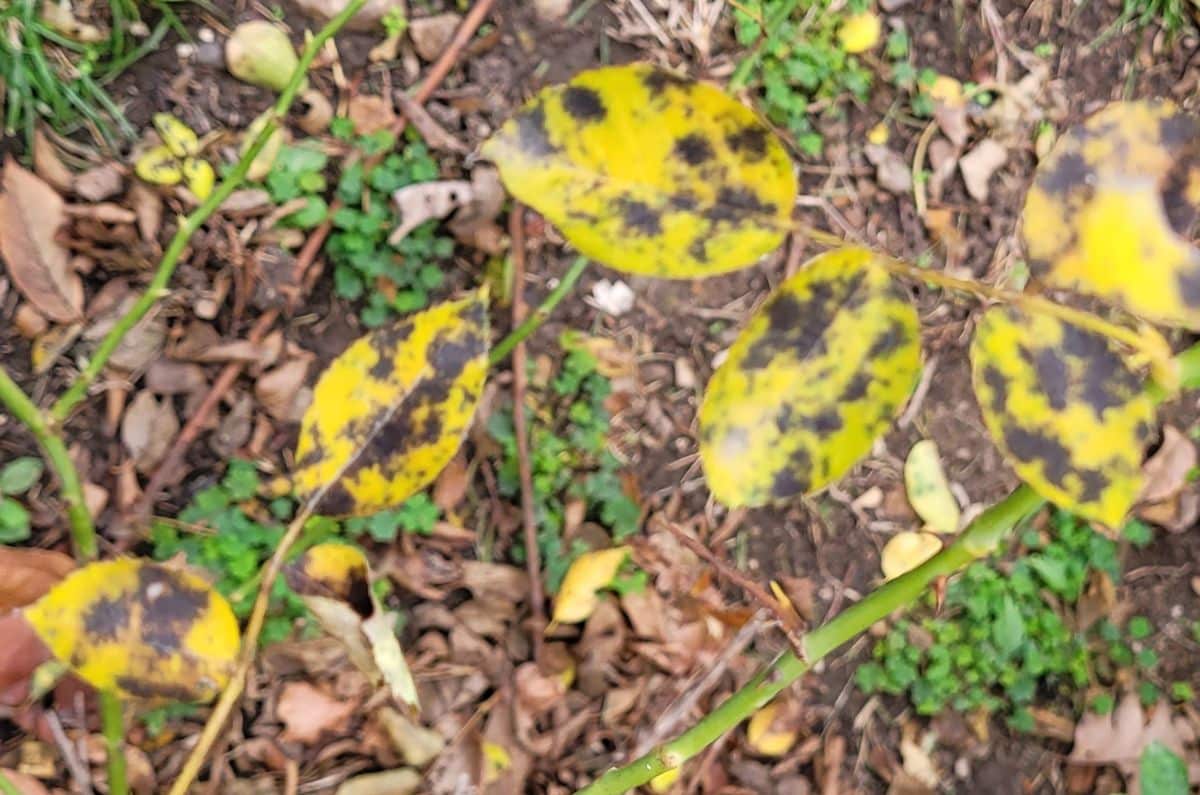
Symptoms can differ between rose varieties, and different strains of fungus will also show up differently on rose leaves. Oh, yes, there are actually different strains of the black spot fungus, which adds to the challenge of stopping the disease!
In general, you’ll see black spots or purple blotches rapidly spreading on the upper leaf surface. The spots can’t be rubbed off. Sometimes, there will be some yellowing around the spots. Sometimes, the leaf will turn yellow and fall off; sometimes, it falls off when it’s green.
In a bad case of black spot, the rose is completely defoliated, leaving nothing but canes and miserable-looking blossoms. Even the canes could have purple blotches on them.
Life Cycle of Black Spot
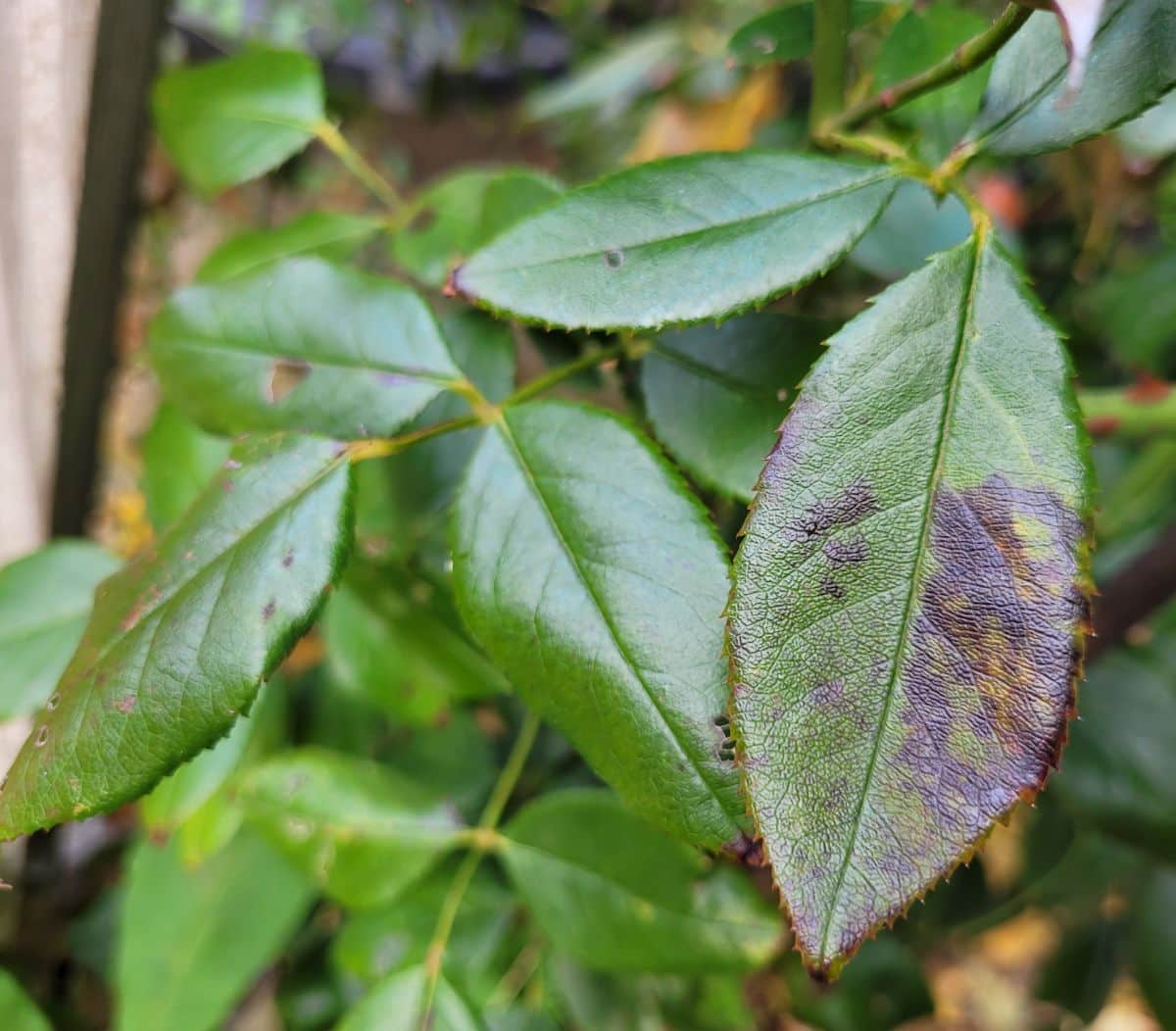
The Diplocarpon rosae fungus will overwinter on diseased leaves and canes. In spring, it will produce spores. Raindrops will splash the black spot spores up to the new leaves that are unfurling on the rose. If the leaves stay wet for at least seven hours and temperatures stay between 75 and 85 F, the spores will germinate, and the fungus will infect the leaf surface.
How do they infect the leaf? The fungus penetrates the leaf surface and takes up residence inside the surface of the leaf. CHECK.
The black spot fungus matures within two weeks if temperatures stay warm. It makes its spots, which are actually fruiting bodies that expel tiny spores. Falling rain once again splashes spores to new leaves, spreading the disease further.
Why is Black Spot So Hard to Eradicate?
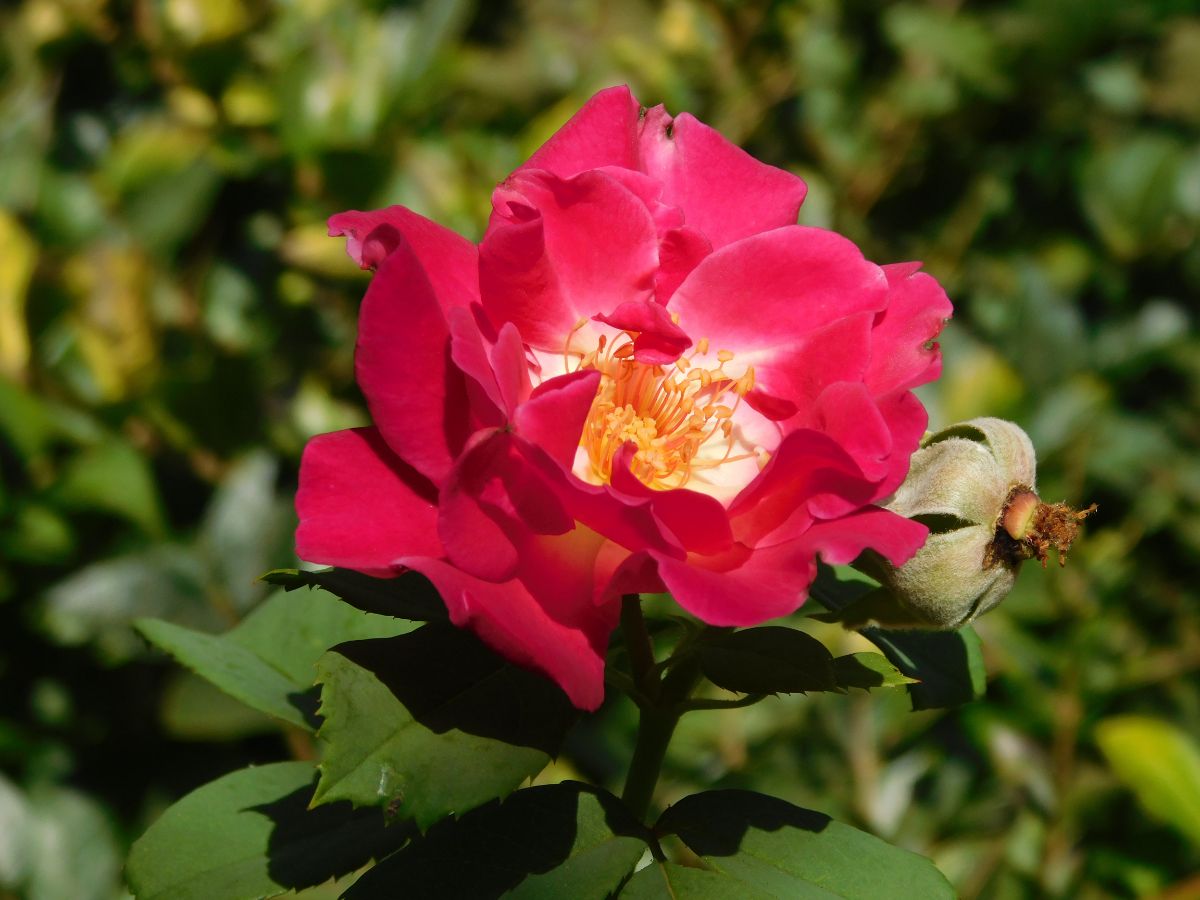
Black spot is something like the flu because the fungus that causes this disease adapts rapidly to chemicals and keeps changing. There are multiple versions of the Diplocarpon rosae fungus that causes black spot – and different versions respond (or don’t respond) to different controls.
What’s more, some versions of the black spot fungus have adapted to different fungicides.
Some new roses that have been bred to resist black spot end up failing because the fungus changes enough to overcome this resistance.
But this doesn’t mean that beating black spot is a lost cause. There are still plenty of ways to get rid of it and keep roses healthy.
How to Prevent and Control Black Spot on Roses
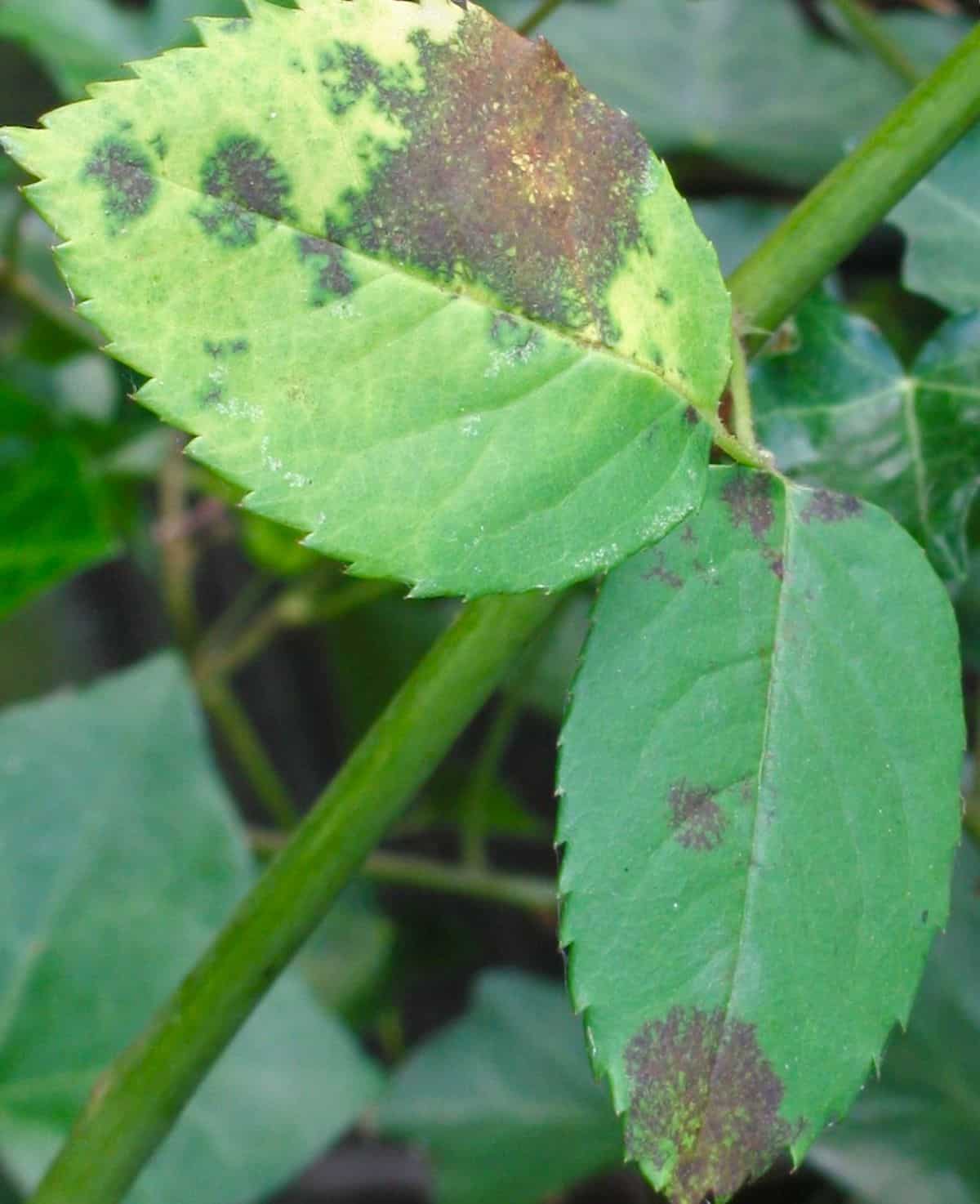
The first line of defense against black spot is good sanitation. What we’re doing here is finding every way that black spot can spread and putting a complete stop to it.
Here are some actions to take that don’t require chemicals.
- Rake up fallen leaves with black spot on them and take them out of the garden to burn them. Don’t compost them because the spores won’t be entirely killed by even a hot compost pile.
- Clip off affected leaves as you see them and dispose of them. It’s kind of hard to spread black spot spores if they’re nowhere near your rose!
- If you have a rose that’s basically “black spot on a stick,” dig it up and replace it with a rose that is more resistant to black spot.
- Fun fact: The Knock-Out roses are resistant to blackspot. How do we know? The breeder would run blackspot-infected leaves, as well as leaves with other diseases on them, through the blender. Then he’d spray the disease slurry on the roses he was breeding to see which were most resistant. This is how the Knock Out rose came to be!
More Ways to Fight Black Spot on Your Roses
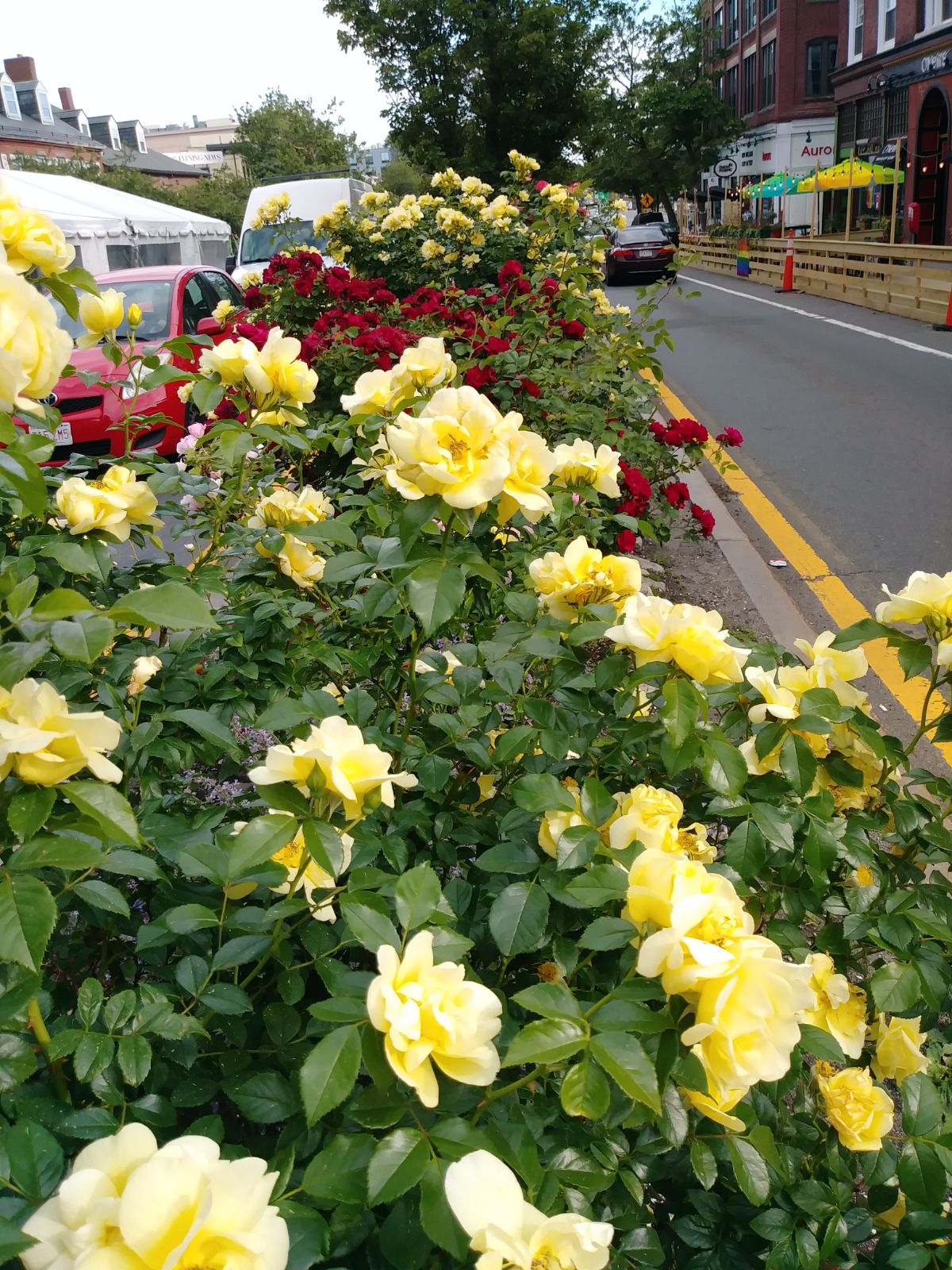
The second line of defense against black spot is to make the environment work against the disease as much as possible.
- Make sure your roses are getting full sun, which will dry the dew and rain off your roses before black spot can form.
- Get your roses out of the shade. Many times, a nearby tree will encroach on your roses and cast them into everlasting gloom. Cut off limbs on the bottom of the tree and trim back overhanging branches to let in more light and improve air circulation.
- Allowing more air circulation around your roses will help leaves dry off faster and keep black spot down. Pull tall weeds and trim surrounding bushes. Move out plants if the area is overcrowded. Prune out some inner limbs on your rose bush so air can move in and around the plant, too.
- Never work with wet roses. Water is how these spores spread. If you touch a wet plant, the water will capture spores, and when you touch another wet rose, you deposit the spores there … and that’s another way to spread black spot.
- Mulch the roses! This will keep water from splashing up on your rose leaves. Mulch also has a variety of other benefits for roses, including holding water in the soil, keeping roots cool in the summer sun, and adding much-needed organic material to the soil.
- Use a soaker hose or drip line to water roses. This keeps the water under the mulch at the foot of your rose, where it belongs – and there’s no water from above to splash black spot spores around.
- Prune off badly infected or dead branches of your rose bush. Black spot shouldn’t be given any space in your garden to propagate itself.
Chemical Controls for Black Spot
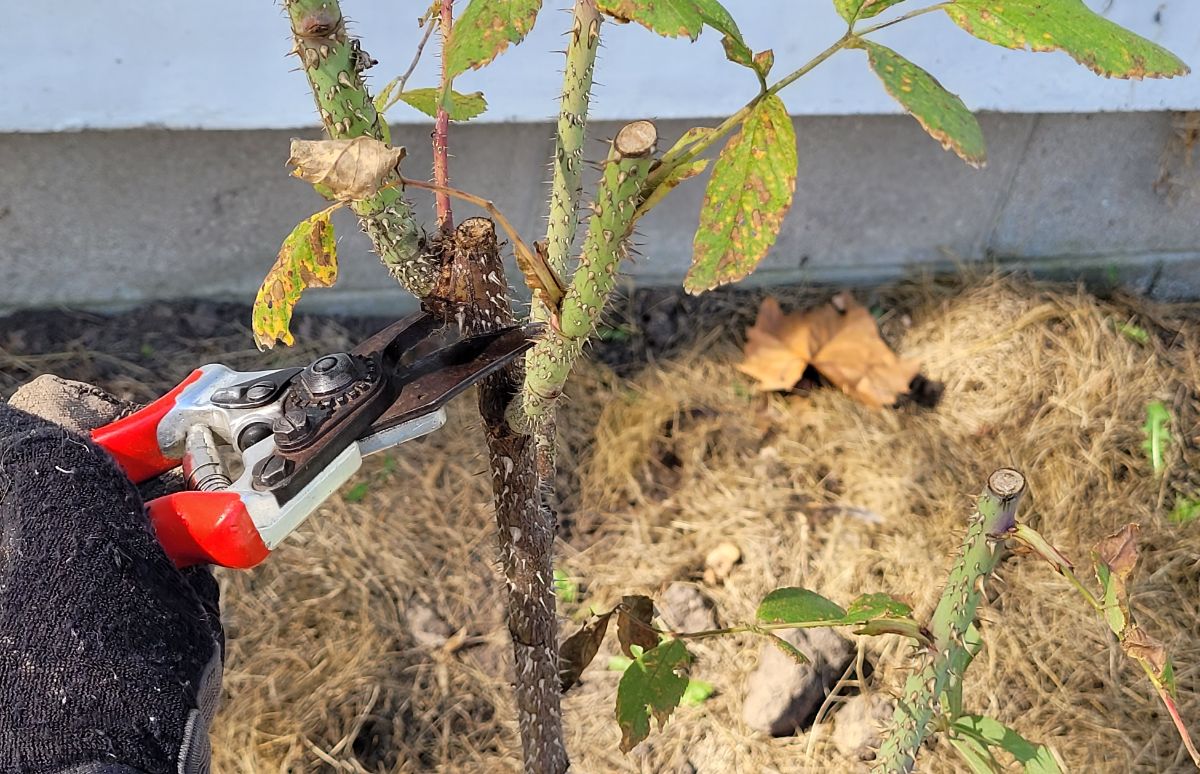
The third line of defense is chemical controls.
If you’re an organic gardener, don’t worry – I will try to stick as much as possible to non-toxic, environmentally friendly chemicals such as neem oil, horticultural oil, and lime sulfur. However, I will use regular non-organic chemicals now and then, but I do my best to be responsible and use only what I need and no more.
There’s a limit to what fungicides can do. Fungicides must be sprayed regularly, and the rose leaves need to be coated to inhibit fungal growth. They work best if you are also getting leaves infected by blackspot out of the garden.
Avoid 3-in-1 fungicides/insecticides. They try to do too many things at once and end up being watered-down and ineffective in too many things. Better to choose a fungicide that targets actual fungi.
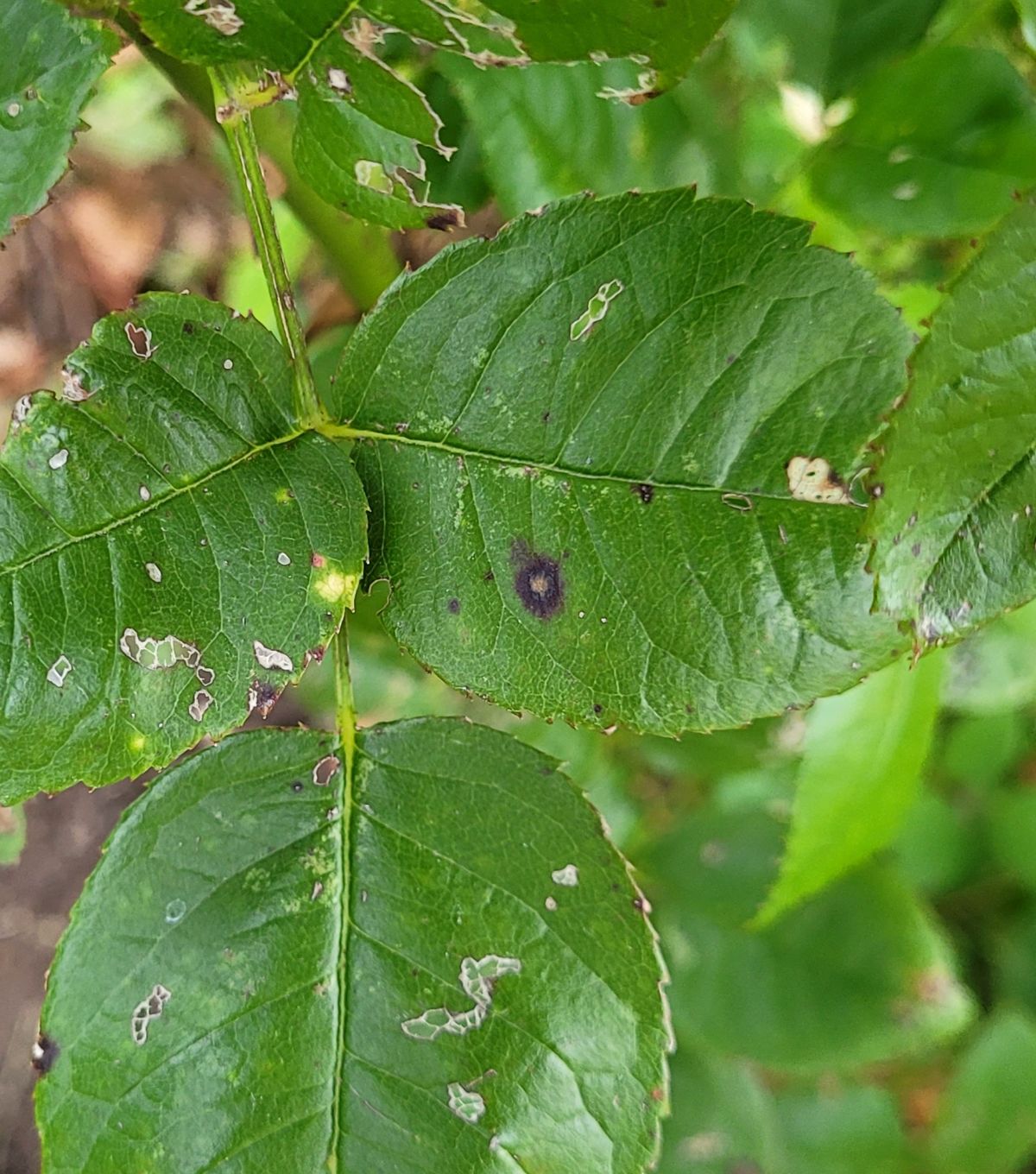
When it comes to black spot, there are several fungicides with different modes of action. If you switch between these two main types, you will have a pretty good chance of keeping the disease in check. Then, in winter, you use the dormant fungicides once all the leaves have fallen and the roses are dormant.
A war against fungi should be fought on several different fronts! Here are the different types of fungicide and what they do.
Preventative fungicides
- They make a barrier against infection by coating the leaf surface, which kills the spores on contact. They are applied on the outside of the rose, principally on the leaf surfaces.
- Preventative fungicide must completely cover the leaf surface. Take care to apply them uniformly over the whole plant.
- These fungicides also break down quickly, so they should be applied every 7-14 days. They must be reapplied if it rains because they get washed away.
- These include captan, sulfur, copper, and mancozeb.
Curative fungicides
- Curative fungicides attack the fungi that have already infected the plant, moving to the place of infection and stopping further development of the fungus.
- These are systemic – they’re absorbed by the rose and work from inside, so they can’t be washed away.
- These don’t break down as quickly in the environment and stick around for a while, so you don’t have to use them as often.
- Some fungi have developed a tolerance to them because they have only one specific mode of action against them. That means if you use them constantly, the fungus eventually develops resistance to it. Eventually, the fungicide becomes less and less effective.
- These include Funginex, daconil, and neem oil.
Dormant fungicides
These are sprayed on mild days in winter when the roses are dormant and have no leaves.
Dormant oil, lime sulfur (no longer labeled for rose use in the United States, alas), and dormant copper are spayed on dormant canes to kill overwintering spores and fungus.
Apply Fungicides to Your Roses Before They Catch Black Spot
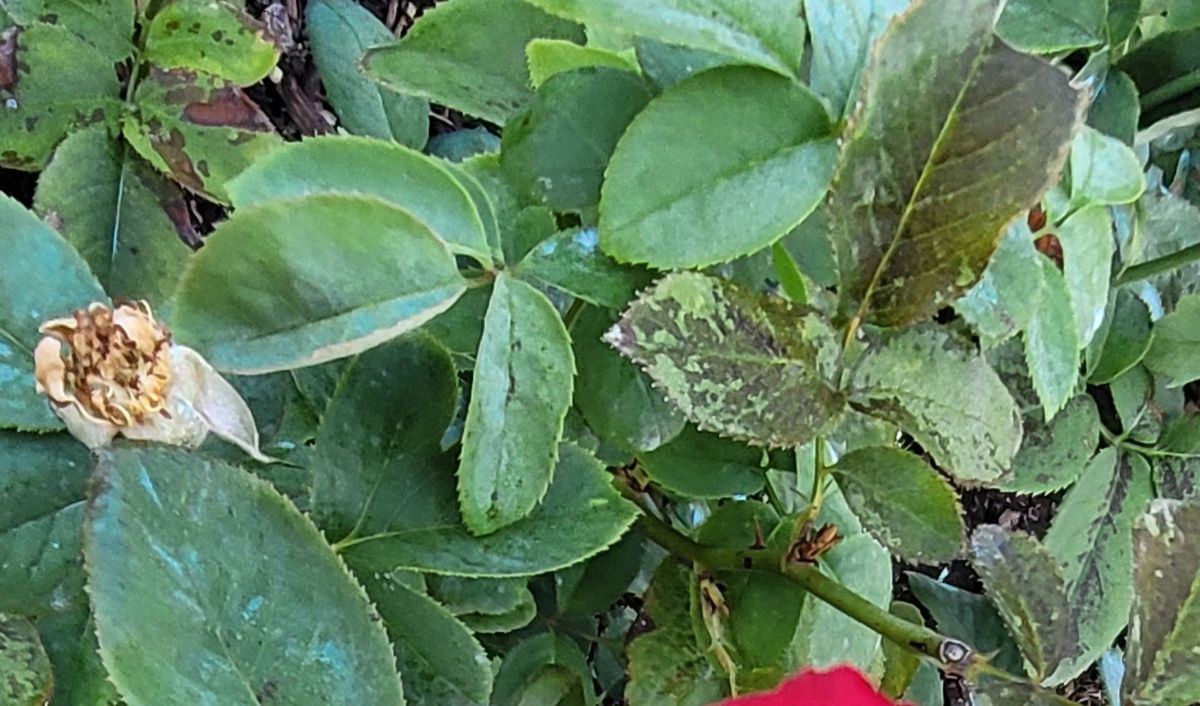
An ounce of prevention is worth a pound of cure, and fungicide application can really show how true that phrase is.
The time to spray your roses is not after they’ve lost all their leaves to black spot. The time to spray starts in spring, just before the new leaves begin to unfurl, and continues every 7 to 14 days until fall.
Start using preventative fungicides in spring to keep black spot under control. This is because the life cycle of the black spot fungus is very short. Sometimes, it can take only 2 to 3 weeks for the spores to germinate, infect the rose leaf, make fruiting bodies, and release new spores! Black spot fungus isn’t going to take a break for you, so that’s why it’s important to keep the disease in check with preventative spraying.
But when an infestation of black spot or another fungal disease begins to rear its ugly head, then it’s time to switch to a curative fungicide. A curative fungicide won’t cure the rose, but it will block recent black spot infections in their tracks. Spray a curative fungicide every week for 5 weeks, then once the infestation has settled down, switch the pack to a preventative again.
Spraying will not kill off every single instance of black spot. Our goal here is not to completely eradicate the disease. The goal here is to keep the disease at a level where it’s easy to keep it in check.
So, to keep black spot to a minimum, be sure to apply all of these different approaches in the rose garden:
- Have a regular spraying routine every week or every other week.
- Get all blackspot-infected rose leaves out of the garden and dispose of them.
- Increase sunlight in the garden.
- Enhance air circulation.
- Avoid touching the roses when they’re wet – this will spread spores and other diseases.
- Add compost and mulch your roses to build the soil.
If you approach the problem from several different angles, you should be able to keep your roses looking clean and healthy.

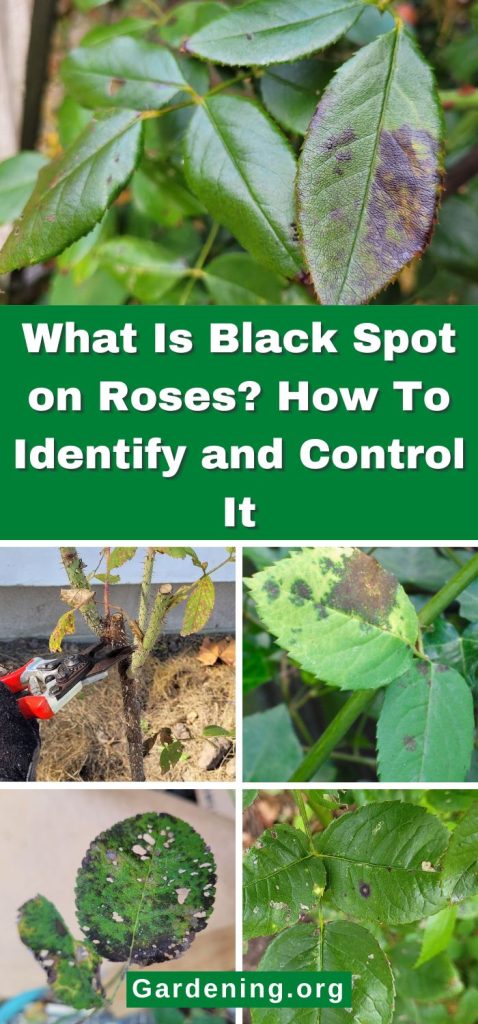
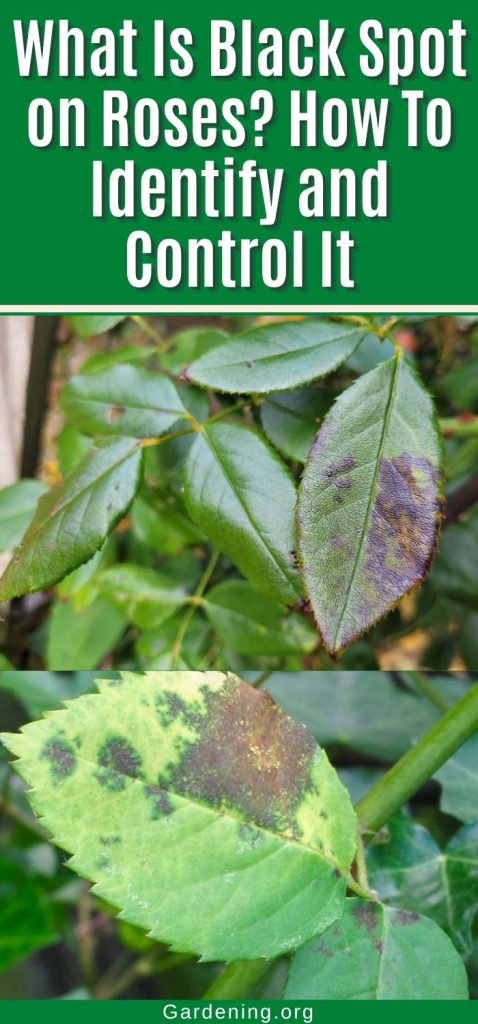

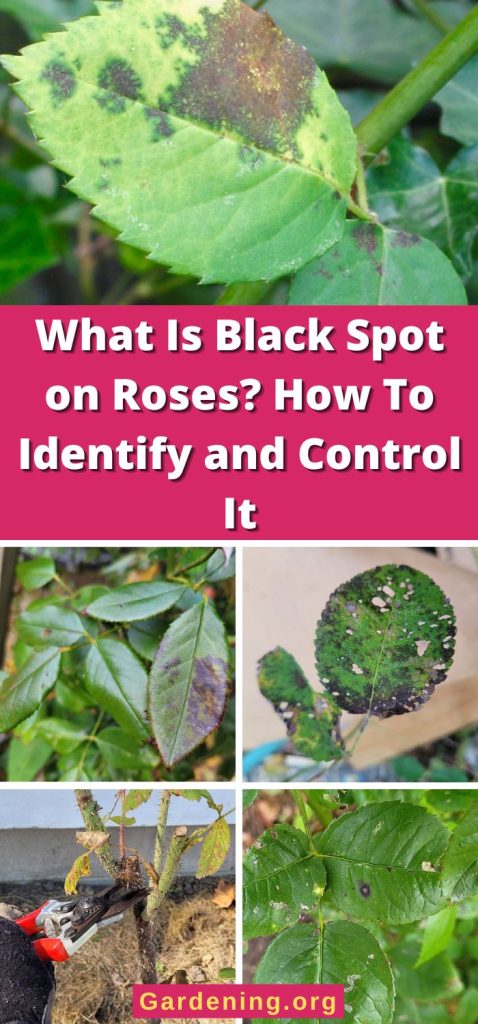

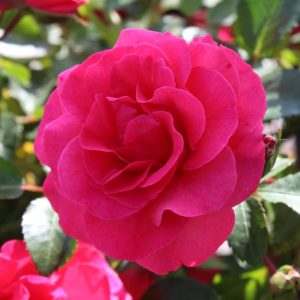
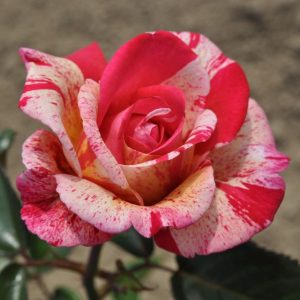

Leave a Reply